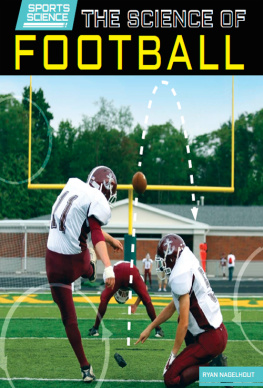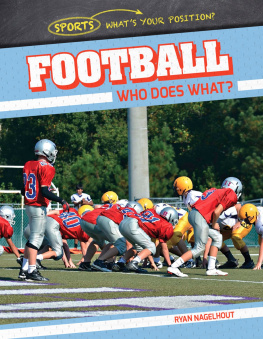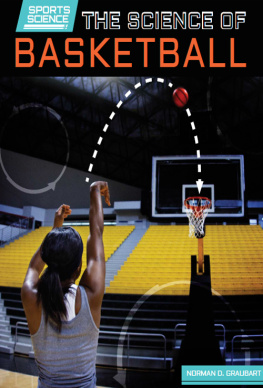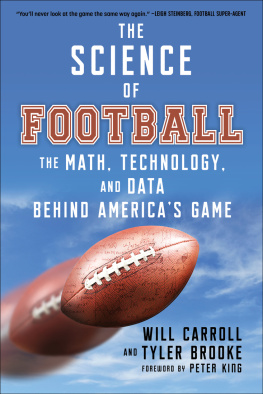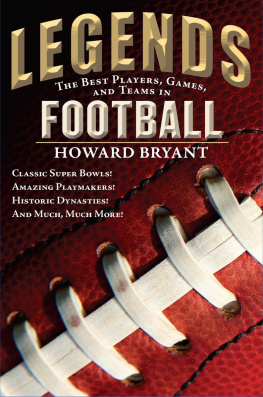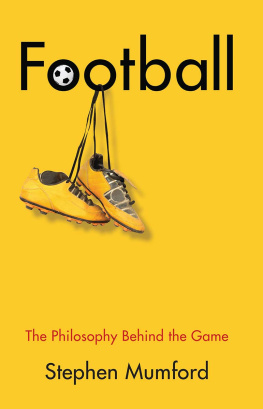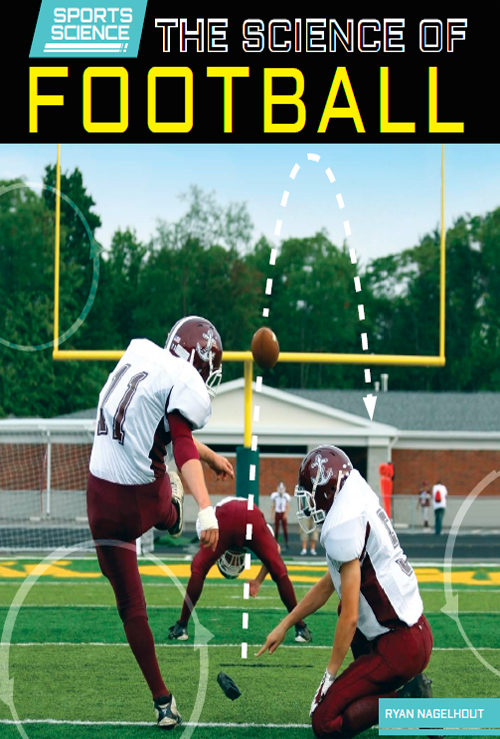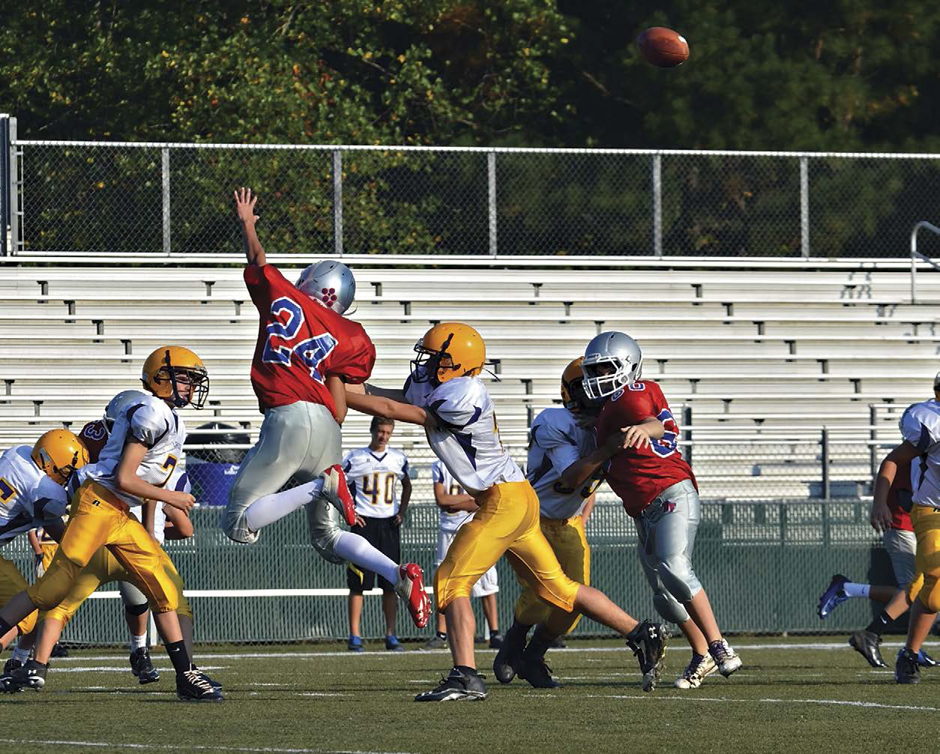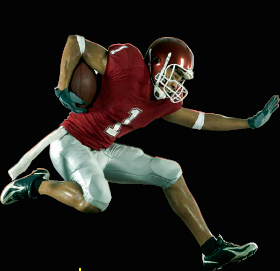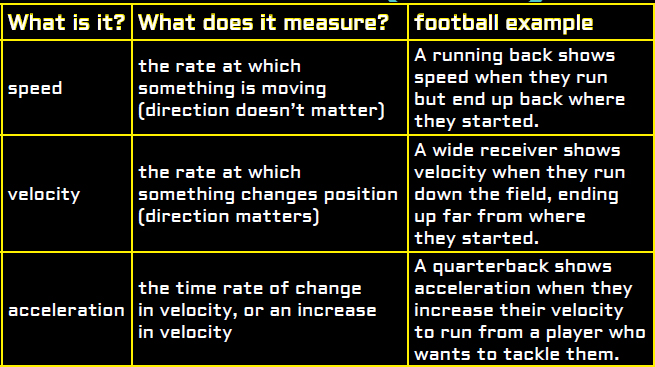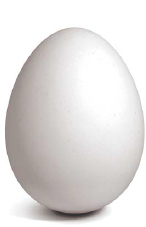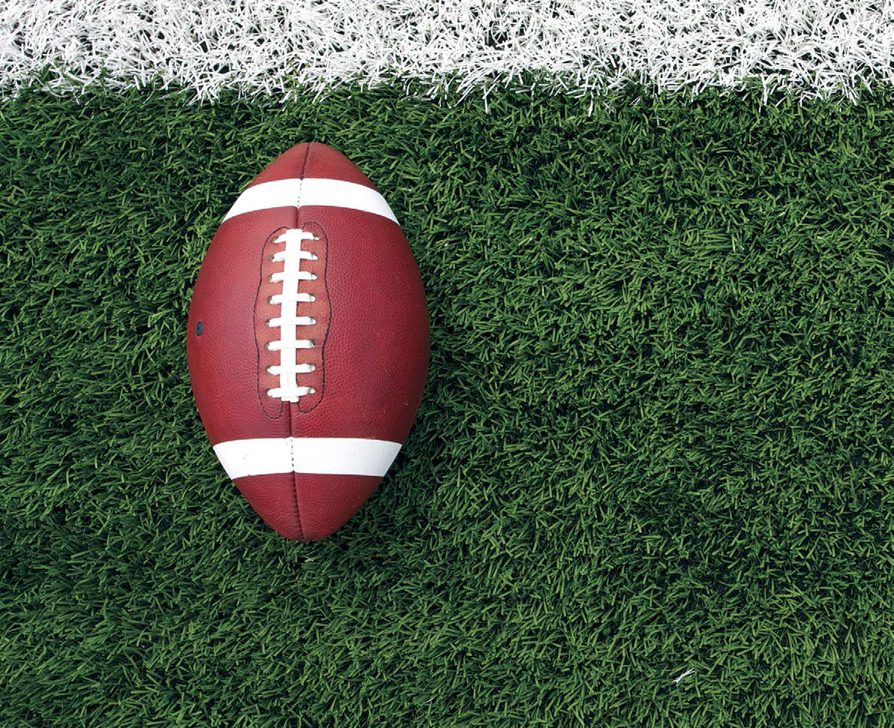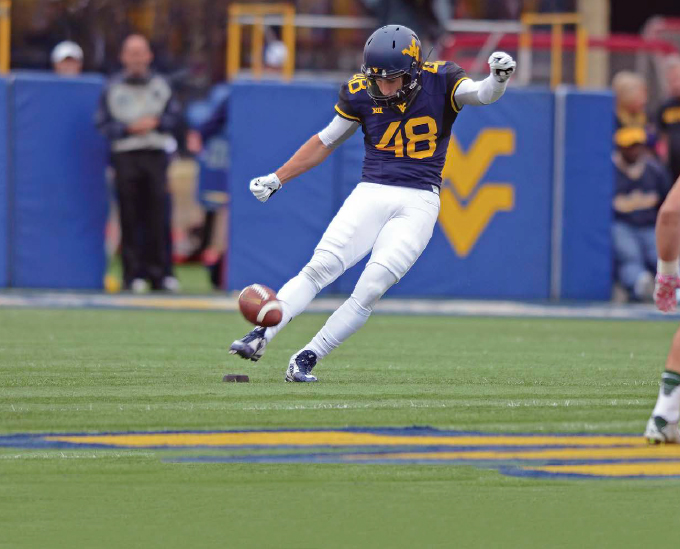Published in 2016 by The Rosen Publishing Group, Inc.
29 East 21st Street, New York, NY 10010
Copyright 2016 by The Rosen Publishing Group, Inc.
All rights reserved. No part of this book may be reproduced in any form without permission in writing from the publisher, except by a reviewer.
First Edition
Editor: Katie Kawa
Book Design: Katelyn Heinle
Photo Credits: Cover Jerry Sharp/Shutterstock.com; back cover kubais/Shutterstock.com; pp. 5, 14 (left) SUSAN LEGGETT/Shutterstock.com; p. 7 Pete Saloutos/Shutterstock.com; pp. 9 (football), 15 David Lee/Shutterstock.com; p. 9 (egg) Gl0ck/Shutterstock.com; p. 11 Aspen Photo/Shutterstock.com; p. 13 Erik Isakson/Blend Images/Getty Images; p. 14 (right) Colorado Springs Gazette/Tribune News Service/Getty Images; p. 17 Baltimore Sun/Tribune News Service/Getty Images; p. 19 Al Bello/Getty Images Sport/ Getty Images; p. 21 (top) Afonso Duarte/Shutterstock.com; p. 21 (bottom) Boston Globe/ Getty Images; p. 23 photo.ua/Shutterstock.com; p. 24 Dziurek/Shutterstock.com; p. 25 Grushin/Shutterstock.com; p. 27 Gene Lower/Getty Images Sport/Getty Images; p. 28 f11photo/Shutterstock.com; p. 29 Robert Beck/Sports Illustrated/Getty Images; p. 30 Jane norton/E+/Getty Images.
Library of Congress Cataloging-in-Publication Data
Nagelhout, Ryan.
The science of football / by Ryan Nagelhout.
p. cm. (Sports science)
Includes index.
ISBN 978-1-4994-1066-2 (pbk.)
ISBN 978-1-4994-1103-4 (6 pack)
ISBN 978-1-4994-1132-4 (library binding)
1. Football Juvenile literature. 2. Sports sciences Juvenile literature. I. Nagelhout, Ryan. II. Title.
GV950.7 N34 2016
796.332d23
Manufactured in the United States of America
CPSIA Compliance Information: Batch #WS15PK: For Further Information contact Rosen Publishing, New York, New York at 1-800-237-9932
PHYSICAL PHYSICS
Football is one of the most popular sports in North America. Every play in a football game is filled with action from great throws made by some of the games best quarterbacks to exciting runs by superfast running backs. But why do place kickers kick differently than punters? How do wind and weather affect the football? Why isnt a football round?
We can answer all those questions with science! Athletes in football are big and strong, but to be one of the best in the game, it helps to be smart. All the running, passing, and kicking that make up the game of football can be explained with physics, which is the science of matter and energy and how they interact.
Theres much more to football than just throwing and running. Its a game filled with science!
WHATS IN A NAME?
FOOTBALL IS A WORD THAT CAN DESCRIBE A NUMBER OF DIFFERENT SPORTS. THIS BOOK WILL TALK ABOUT AMERICAN FOOTBALL. CANADIAN FOOTBALL HAS SLIGHTLY DIFFERENT RULES THAN AMERICAS NATIONAL FOOTBALL LEAGUE (NFL), WHILE AUSTRALIAN RULES FOOTBALL IS AN ENTIRELY DIFFERENT SPORT. MANY PLACES AROUND THE WORLD CALL SOCCER FOOTBALL.
FORCE AND MOTION
Forces and motion are big parts of physics, and theyre also big parts of football. A force is a push or pull on an object that comes from interacting with another object. When the interaction stops, the force stops. In football, examples of force can be found all over the fieldfrom linemen crashing into each other to a wide receiver making a catch.
Football players are constantly moving all over the field, too. Watching the way they move can teach you a lot about speed, velocity, and acceleration. These words might seem to mean the same thinghow fast an object is movingbut theyre actually different in very important ways.
This chart shows the main differences between speed, velocity, and acceleration. The direction an object is moving doesnt matter when measuring speed, but it matters when measuring velocity.
A FORCEFUL GAME
TWO COMMON KINDS OF FORCE SEEN IN FOOTBALL ARE APPLIED FORCE AND FRICTION FORCE. APPLIED FORCE EXISTS WHEN ONE OBJECT APPLIES FORCE TO ANOTHER OBJECT, SUCH AS ONE FOOTBALL PLAYER PUSHING ANOTHER PLAYER. FRICTION FORCE EXISTS WHEN ONE OBJECT TRIES TO MOVE ACROSS A SURFACE, SUCH AS A PLAYERS SHOES MOVING ACROSS THE FIELD.
THE PROLATE SPHEROID
One of the reasons football is such an interesting game is the shape of the ball. A football is a prolate spheroid, which is a rounded shape thats longer than it is wide. This shape helps players throw and run with the ball better than they could with a completely round ball, such as a soccer ball.
A prolate spheroid, however, moves differently than a round ball when it bounces. Its tough to predict how a football will bounce because of its shape. When a player fumbles, or drops, the football, theres no telling where it will bounce. Sometimes it will bounce right back to the ball carrier. Other times, it will bounce away. This makes football a very unpredictable sport.
An egg is another example of a prolate spheroid.
EXTRA POINT
Each NFL football must be 11 to 11.25 inches (28 to 28.6 cm) long, 28 to 28.5 inches (71 to 72.4 cm) around, and weigh 14 to 15 ounces (397 to 425 g).
AERODYNAMICS
AERODYNAMICS IS THE SCIENCE THAT STUDIES THE WAY AIR MOVES AROUND OBJECTS AND THE WAY OBJECTS, SUCH AS FOOTBALLS, MOVE THROUGH THE AIR. SCIENTISTS WHO STUDY AERODYNAMICS STUDY THINGS SUCH AS THE WAY THE SHAPE OF A FOOTBALL AND ITS MATERIAL AFFECT ITS SPEED AND MOTION IN THE AIR.
K-BALLS
Kickers use different footballs than the rest of the players on a football team. Called K-balls, these balls were added to the game in 1999 because league officials thought kickers were doing things to the regular footballs to make them go higher and farther. Kickers would soften the leather and add more air to the ball. There were even stories of kickers putting footballs in microwave ovens and dryers!
K-balls come right out of the box two hours before a game, which makes them harder and gives players little time to soften them. The balls come out of the box with a waxy top layer, which makes them slippery. Kickers have to work fast to rub them on the field to break down the waxy layer, soften the leather, and make them go farther.
Kickers have to work hard to make K-balls as aerodynamic as possible.
CONTROLLING A K-BALL
K-BALLS ARE HARD TO CONTROL BECAUSE THEYRE VERY SLIPPERY.THERES LESS FRICTION FORCE BETWEEN A K-BALL AND A PLAYERS FOOT OR HANDS BECAUSE THE WAXY LAYER REDUCES FRICTION. FRICTION IS OFTEN SEEN IN THE RESISTANCE BETWEEN TWO SURFACES, AND IT HELPS PLAYERS HOLD ON TO THE FOOTBALL.

